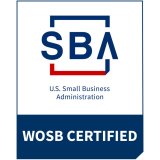Two-Way Radios vs. Push-to-Talk Over Cellular (POC): What’s the Difference?
When it comes to instant, reliable communication in the workplace, two of the most common solutions are Two-Way Radios and Push-to-Talk Over Cellular (POC) devices. Both have their strengths, and choosing the right one depends on your environment, team size, and operational needs. So, what exactly sets them apart?
Let's break it down.
What Are Two-Way Radios?
Two-Way Radios (also known as walkie-talkies) have been around for decades, and for good reason. They're tried-and-true tools for instant voice communication across short to moderate distances.
How they work:
Two-Way Radios use radio frequencies (UHF or VHF) to transmit and receive voice signals. There's no need for Wi-Fi or cellular service, just press the button and talk.
Pros of Two-Way Radios:
- No monthly fees: Once you own the radios, you're good to go.
- Instant communication: Zero latency; talk at the push of a button.
- Rugged and reliable: Built for tough environments like construction sites, factories, and schools.
- Works off-grid: No need for cell towers or internet.
Limitations:
- Range is limited: Coverage depends on terrain, buildings, and interference.
- FCC licensing required: Commercial users need a license.
- Limited features: Basic radios don't offer GPS tracking, texting, or multimedia sharing.
What Is Push-to-Talk Over Cellular (POC)?
POC devices look like radios but use cellular networks and Wi-Fi to transmit voice (and sometimes data). Think of it as a walkie-talkie built into a smartphone-like device.
How they work:
Instead of radio frequencies, POC units connect via 4G or Wi-Fi.
Pros of POC:
- Nationwide: If there's cell service or Wi-Fi, you're connected.
- Rich features: GPS tracking, group texting, photo and video capabilities.
- No FCC license needed: Easy to deploy and scale.
- Expandable: Add users or features with software updates or cloud-based dashboards.
Limitations:
- Monthly service fees: Typically, a subscription-based model.
- Dependent on network availability: Poor cellular coverage = poor performance.
Head-to-Head Comparison:
| FEATURE | TWO-WAY RADIOS | PUSH-TO-TALK OVER CELLULAR (POC) |
| Range | Local/Regional | Nationwide |
| Network Required | No | Yes (Cellular or Wi-Fi) |
| Monthly Fees | No | Yes (Per User/Device) |
| Licensing | FCC License Often Required | No FCC License Required |
Which One Is Right for You?
Choose Two-Way Radios if:
- You need reliable, no-frills communication in a local area, especially in remote or rural locations without cellular coverage.
Choose POC if:
- Your team is spread out geographically, you need more advanced features, or you want the flexibility of cloud-based communication tools.
Final Thoughts
There's no one-size-fits-all answer, many organizations even use both solutions to cover different uses. The key is understanding your communication needs, coverage requirements, and budget.
Still unsure which is the best fit for your team? Reach out, we're happy to help you evaluate your options and even provide a free equipment trial.
| Category: | Two-Way Radio |





